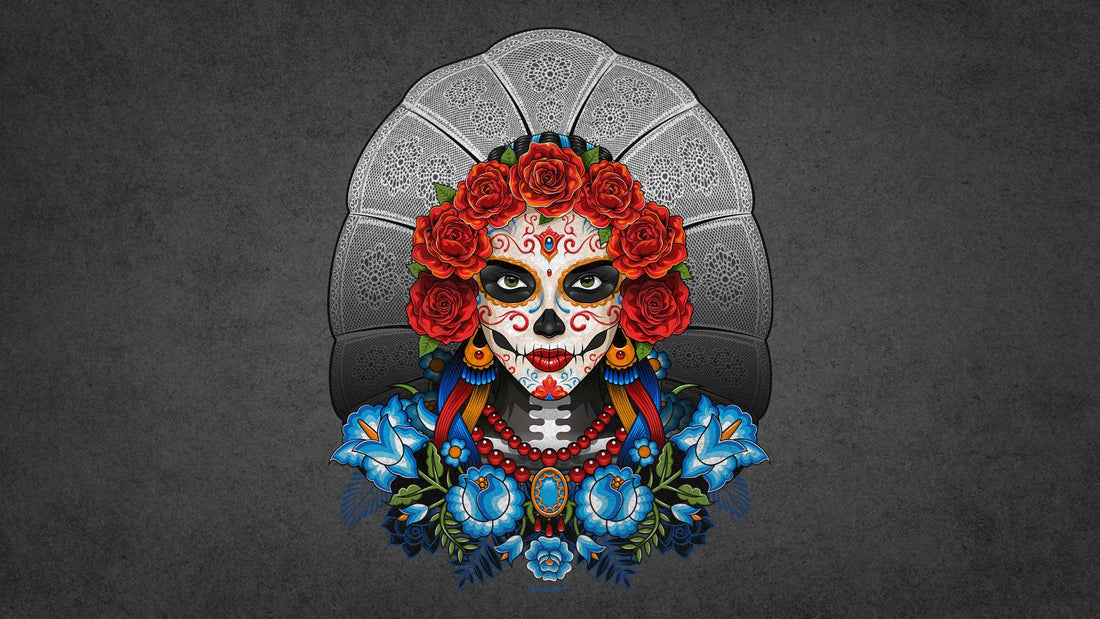The Legend of Catrina Tehuana: The Lady of Eternal Elegance

Share
Tehuana Catrina: Eternal Lady of Ancestral Elegance and the Festive Cult of Death
In the festive Mexican universe where death dresses up, Catrina Tehuana emerges , a sublime synthesis of the Isthmus elegance and the ritual depth of the Day of the Dead This transcendental figure embodies the matriarchal dignity of the Zapotec culture fused with the catrina iconography created by José Guadalupe Posada
Divine Genealogy: Fusion of Cosmologies
Catrina Tehuana is born from the spiritual confluence between Mictēcacihuātl, lady of the Mexica underworld, and Pitao Bezelao, Zapotec deity of the dead. Her existence symbolizes the cultural syncretism that characterizes the Oaxacan identity where pre-Hispanic traditions dialogue with colonial influences.
Ritual Clothing: Textiles as a Sacred Language
Her ceremonial huipil features ancestral embroidery that narrates Zapotec cosmogonic stories : the floral motifs represent the life cycle while the geometric symbols trace ancestral star maps. The isthmus glow that crowns her head symbolizes matriarchal authority and the celestial connection characteristic of Tehuana women.
Transcendental Makeup: Dialogue Between Life and Death
The skull-like face of the Tehuana Catrina uses the catrina aesthetic to create a visual bridge between existential planes. The floral decorations painted on the skull evoke the traditional offering where death is celebrated with vibrant colors and ritual joy.
Ceremonial Presence: Altars and Parades as Ritual Spaces
During the Day of the Dead festivities, Catrina Tehuana manifests itself through ritual performances where contemporary Tehuana women embody their essence in ceremonial processions. These sacred parades revive the community's spiritual tequio, strengthening intergenerational ties and collective memory.
Ancestral Dance: Movement as Collective Prayer
The choreographic legend tells how Catrina Tehuana introduced the ritual dance of the veils where the serpentine movements symbolize the connection between worlds. This dance practice has become intangible heritage that preserves the bodily wisdom of the peoples of the Isthmus.
Contemporary Meaning: Icon of Cultural Resistance
Beyond its festive dimension, Catrina Tehuana represents the cultural resistance of the Oaxacan peoples in the face of global homogenization. Her image has become an emblem of empowerment for contemporary indigenous women who claim their textile identity and their right to beauty on their own terms.
Eternal Legacy: Pedagogy of Ritual Elegance
Catrina Tehuana teaches that true elegance lies in cultural coherence and ancestral pride . Her figure promotes an aesthetic of resistance where sophistication is not measured by Western parameters but by historical depth and community vitality.
